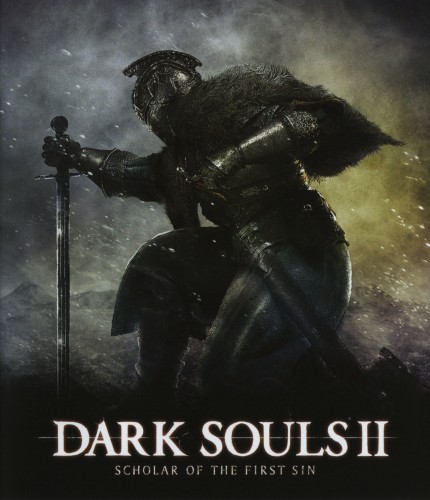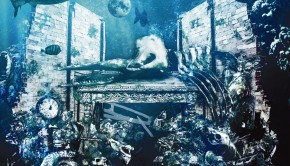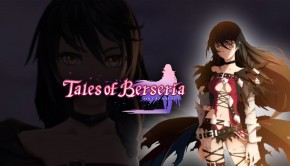Dark Souls II -Scholar of the First Sin- Original Soundtrack
 |
Album Title: Dark Souls II -Scholar of the First Sin- Original Soundtrack |
| Record Label: From Software |
|
| Catalog No.: FFSA-ST006/7 |
|
| Release Date: February 5, 2015 |
|
| Purchase: Buy Used Copy |
Overview
Dark Souls II Scholar of the First Sin Original Soundtrack is the 2-disc album released only with the Japanese limited edition of the game. The first thirty-five tracks of the release cover the original Dark Souls II score, with several tracks here presented in full as opposed to the truncated versions from the previously released soundtrack. The remaining tracks are from the three DLC expansions to the game. The scores are composed by Motoi Sakuraba and Yuka Kitamura, and aside from a handful of quieter tracks, mostly focus on dark and bombastic orchestral themes in a similar style to the first Dark Souls score.
Body
The soundtrack begins with the original Dark Souls II score, starting with “Departure”. Here it includes a three-minute introduction that was removed from previous releases. Rather than jumping straight into the action, the track now has an atmospheric lead-up, starting very quietly before blossoming into a reduced version of the theme with vocal emphasis. It then finally explodes into a cacophony of strings, brass, percussion, and vocals. However at the track’s end, the only aspect that is memorable is the dynamic journey it goes through; little melodically stands out, and the synthetic orchestral sound is rather flat, especially in its phrasing of the meagre melodies that are present, leaving the notes disconnected and thus feeling all the more arbitrary. This unfortunately is a common criticism that can be made for a large majority of the tracks, which are mostly boss themes, as the game very sparingly uses music outside of these battles. Tracks like “The Last Giant”, “Ruin Sentinel”, “Old Iron King”, “The Duke’s Dear Freja”, and “Guardian Dragon” feel generic, and their homogeneity does not help in the larger context of the soundtrack. Dissonance and chaos only go so far, and these tracks are rather overuse these with little else to carry them. But the lack of live instruments is the biggest disappointment with these tracks, especially since the original Dark Souls had them.
There are better boss tracks from the Dark Souls II score that have fewer issues and stand out a bit. “Old Dragonslayer” has a solid undercurrent of strings that drives the track and gives it a solid foundation. The added few minutes adds in a quieter interlude where the songs gets to focus on the elements other than the strings, which admittedly is less interesting but gives a nice contrast, and once the strings finally do come back in their ever-upward ascent is felt more strongly for it. “Executioner’s Chariot” is a similarly strong track with more brass emphasis, and here the extra minute at its opening allows the track to build up to hit harder. “Skeleton Lord” has a nice harpsichord inclusion, as well as bit more personality with a Halloween-styled arrangement. “Royal Rat Authority” benefits from a general haze over the sound of the track and the tribal percussion throughout. “Demon of Song” has an unsettling low bass groaning with piano flourishes that makes it distinct, though I wish the piano was more prevalent, as it is often drowned out by the other instruments (and this occurs in other tracks as well). “Ancient Dragon” is quite exciting, with clearer melodic figures and an atmosphere that is more energizing than the other tracks on the album. “Nashandra” is the climactic track, with a slightly extended piano opening here that gives the boss a more emotional characterization than the other tracks of the album do. There are some great moments when the song pushes hard with swirling strings and strong bass, in contrast to the more solemn moments with just piano and strings. Generally these themes have more energy to them, and some melodies that are more memorable.
A couple of boss tracks are much more subdued, and offer a break from the rest of the soundtrack. “Flexile Sentry” focuses on drawn out bass notes and is mostly just atmospheric, though not much more than that. “The Lost Sinner” is busier with more elements to it which at first seem placed in a very randomly manner, just making noise. It does later come together with more structure, but never really becomes easy on the ears. “Mytha The Baneful Queen” is much better, with an echoing idiophone and harpsichord throughout that brings out an essence of sadness tinged with madness. There’s an eerie metronomic feel as well, and the sound evolves quite a bit through the piece, keeping it from becoming stale. “King Vendrick” is more melancholic and minimalistic, this time centring on a harp and piano with few few sound effects fluttering around it and light strings later on. It’s a haunting piece in the game, and it still works outside of it too.
There remaining tracks in the original Dark Souls II score are also quieter, and not associated with battles. “Fire Keepers” is a tranquil piece using the harp for its base and later introducing some strings and an idiophone. Similar is “Majula”, which switches out the harp for the idiophone. The sad strings underneath feel more substantial here, but in terms of general feel it isn’t all that different from “Fire Keepers”, or even from “King Vendrick”. Piano solo “Queen of Drangelic” is the source of some of the piano parts found in “Nashandra”, but unfortunately on its own it is rather unimpressive and unmemorable, and the piano sound noticeably lacks the tone of a real piano. Two quiet wordless vocal themes are also on the soundtrack. “Milfanito” is only backed by the reverberation and though it is a bit too slow and sparse for my liking, though it has a decent melody and I like the use of both legato detached notes on the phrases. “Longing” has the ethereal voice of Emi Evans on it with a light accompaniment, but the track is overlong and again a tad too slow, and the synth strings really let down the piece later on when they get louder. It’s a shame because there are some nice harmonic moments on the track, like the opening arpeggiation that surprisingly leads to a major chord opening. It’s disappointing after the memorable “Nameless Song” from the first game, even as “Longing” takes several stylistic notes from is predecessor.
The last twelve tracks are the new songs for the three DLC expansions and Scholar of the First Sin. Again, many boss and battle tracks are present and follow the same style as the original score. Tracks like “Fume Knight”, “Burnt Ivory King”, and “Zallen and Zud” unfortunately don’t have much standing out for them, but the others make up for it, mainly through a use of figures from “Gwyn, Lord of Cinder” from the first Dark Souls. “Eleana, the Squalid Queen” has a such a figure which makes it a bit more familiar sounding and grounded, but it also benefits from a decently dynamic arrangement with some very bombastic segments contrasted to quieter ones with just piano and choir. It helps that the piano line is distinct with many flourishes, but I wish it was louder throughout, since it would really add to the track. “Sinh, the Slumbering Dragon” also uses a “Gwyn” figure, and also benefits from a more accessible tonal composition. “Worshippers of the Dead” and “Sir Alonne” are also quite good, having more character to their compositions thanks to a mournful melody on the strings above underpinnings with strong momentum. “Sir Alonne” also has some counterpoint later on that sounds great. For the most part they stand above many of the other tracks from the Dark Souls II score.
A few quiet tracks are also part of the expansions. “Aava, the King’s Pet” is nice piece of mostly strings and choir with solo strings wandering about, carrying a sadness to it as well. “Aldia, Scholar of the First Sin” is more expressive with the piano at the forefront, and again its a shame that real strings weren’t used, as the thick texture that the songs tries for is good but doesn’t come across. The shorter “Nowhere” is quite nice with a decent build up, though also with a low droning bass that is a bit odd in contrast to the blossoming sounds high above it. “Remains” is a sparse piano solo that draws some figures from the soundtrack as well as from “Gwyn”. It’s one of the moodier songs, and one of the more memorable tracks on the album. “Bearer of the Curse” begins quietly with some vocals strewn around, but then it explodes into another epic track, which at times is a bit scattered like the rest but by the end becomes focused, finishing strong. The bonus track “Sin and Crowns” opens with some sad strings and vocals, with a more emotive sound than the vast majority of the album. This too does not last long before breaking into an epic finish for the album. Perhaps it is just because it is the closer of the album, but the pandemonium here seemed to work much better, especially with the soprano soaring above it all throughout.
Summary
Overall Dark Souls II -Scholar of the First Sin- Original Soundtrack is still a rather disappointing soundtrack. The original Dark Souls II score is very homogenous, constantly utilizing an overbearing orchestra with compositions that are suitably dark and deranged but ultimately hard to follow and often very unfocused, and further hampered by the synthetic orchestra. This latter point is especially disappointing since it is a score for a highly anticipated game whose predecessor was afforded live instruments. The score manages to work well enough for the game but does not make for much enjoyment outside of it. There few quieter tracks are good, but they don’t save the soundtrack. The extensions to the original tracks here don’t offer much either, other than on a few tracks like “Departure”. The new DLC tracks are generally better and more focused than the original score, but still only a handful of tracks will be appealing, even for those who played through the game.
Do you agree with the review and score? Let us know in the comments below!
2.5
Posted on March 2, 2016 by Christopher Huynh. Last modified on March 4, 2016.














